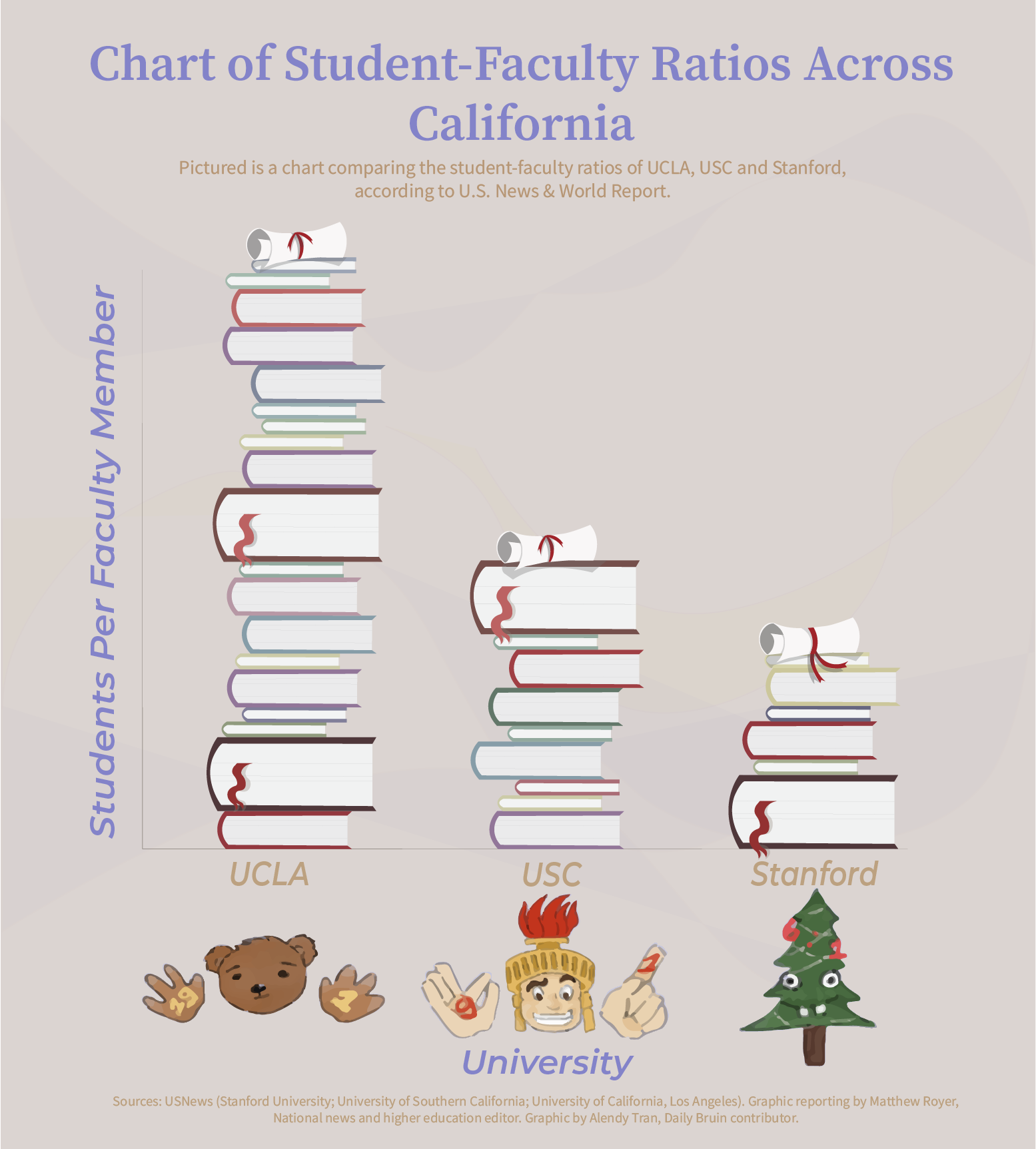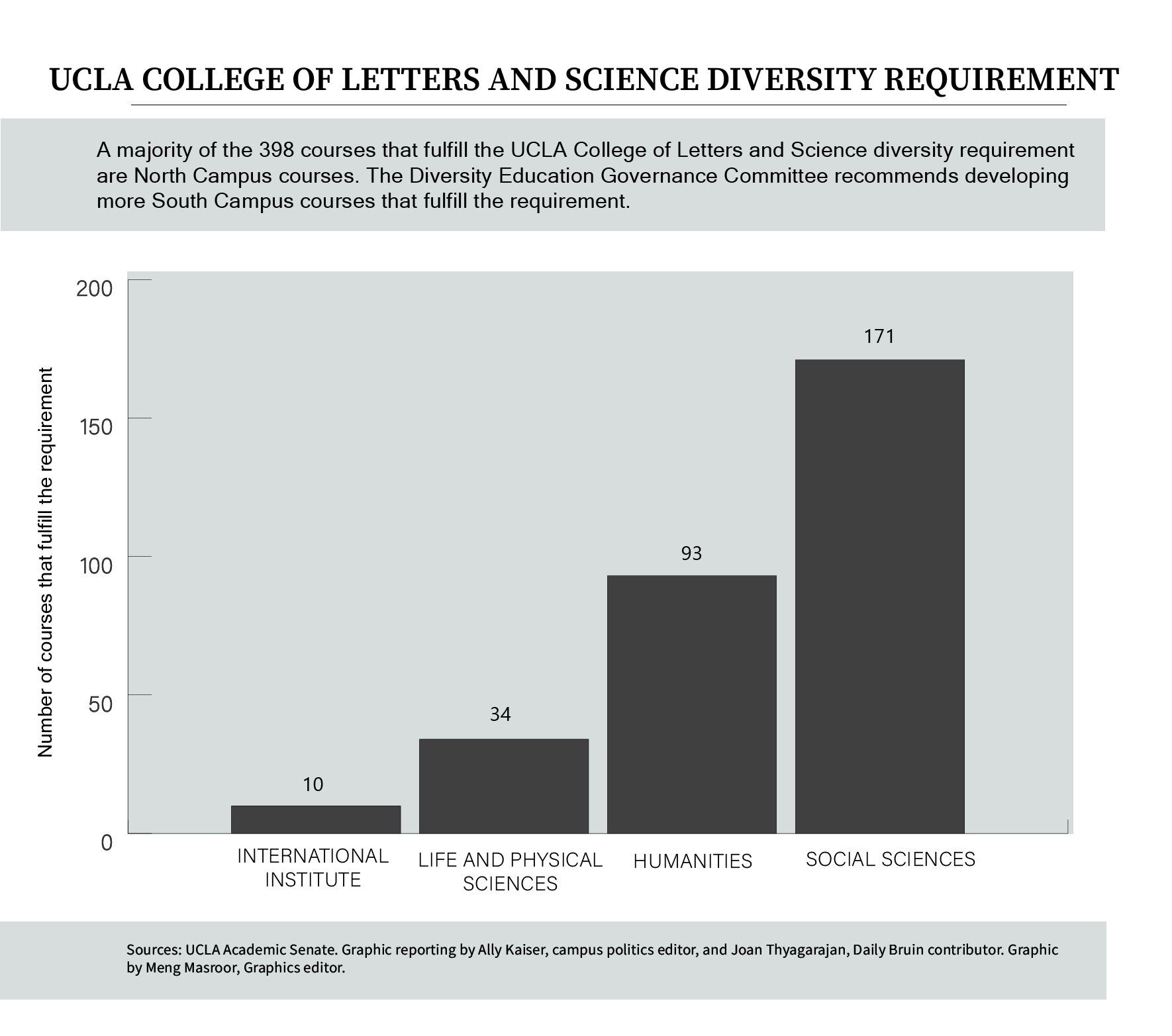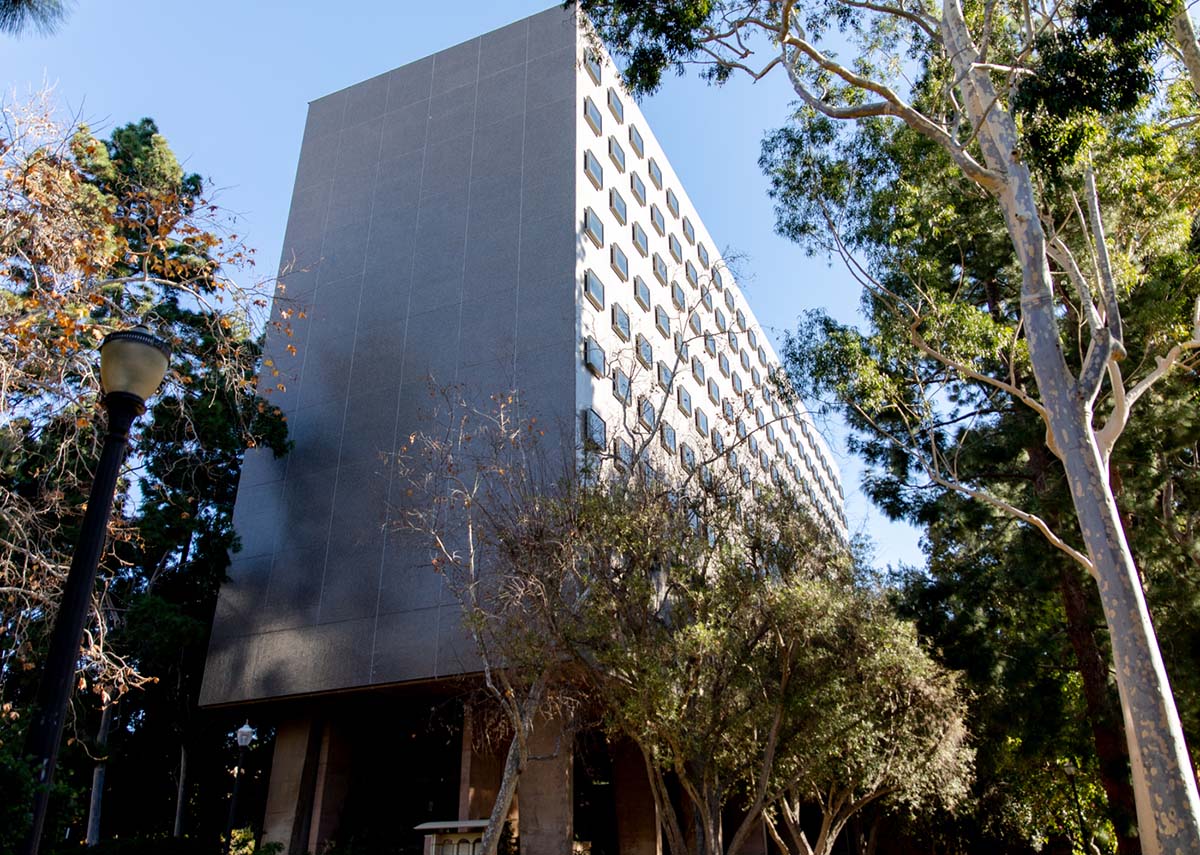Students, faculty discuss 19-1 student-faculty ratio

U.S. News & World Report listed UCLA’s student-faculty ratio at 19-1, a ratio far higher than some private universities in California.
The September report found that although UCLA is in a similar range to other UC campuses, it still differs significantly in comparison to other top-ranked universities such as the University of Southern California and Stanford, which have student-faculty ratios of 9-1 and 6-1, respectively. Professors and students at UCLA tend to find themselves in larger lectures and seminars, with only 49% of classes having 20 or fewer students, according to U.S. News.
Kevin Terraciano, a professor of Latin American history and chair of the history department, said that while his upper-division course has 10 to 15 students, allowing him to meet with students individually and get to know each of them by name, the lower-division course that he teaches can have up to 420 students. He added that while he works to create engaging lectures in these lower-division courses, it can be difficult to make connections with students because of the larger class sizes.
“One of the best things about education is having that attention and having that interaction with a faculty member and being able to get to know the peers around you in your course,” Terraciano said. “If you’re taking a course of 400, then chances are you’re not going to get to know many students.”
Amanda Armenta, an associate professor of urban planning, said she prefers to have class sizes under 30, as it allows her to get to know her students. She said that in her larger classes, there are limited opportunities for her to individually engage with students outside of lecture.
Additionally, students may be afraid to ask for help in a large class because of how many people there are, said Jeremiah Martin, a second-year psychology student.
One way to address these issues is through discussion sections with teaching assistants, Terraciano said, adding that discussion allows students to have a more personalized learning experience in addition to reviewing lecture material.
Some students said an engaging professor can also address issues with large class sizes. Christian Hope, a second-year cognitive science and economics student, said he enjoyed Life Sciences 15 – a lecture of over 200 students taught by Jay Phelan, an academic administrator for the Life Sciences Core Education – because he felt that Phelan interacted with students and helped them remain engaged throughout the entire lecture.
“He interacts with us in a very fun way,” Hope said. “In a sense, if it is with the right professor, a huge student-to-faculty ratio is OK. But it’s very hard to come across those types of professors in college.”
However, Hope said there can also be advantages to large class sizes. For example, he said students are encouraged to use new learning techniques in large lectures.
“Public school education, I knew going into it, was going to be a lot of self-teaching, because there’s only so much a professor can do, only so much a TA can do,” Hope said. “I can learn here without having to rely on a teacher or professor.”
Martin said he believes there is also a social benefit to larger classes, as students are able to get to know more people. However, he added that classes with fewer students can make it easier to form deeper connections and friendships with other students.
“The smaller classes are more intimate,” Martin said. “It will be easier to make friends in a smaller class, even though you’ll have the opportunity to make more friends in a larger class.”
Armenta, who teaches both larger and smaller lectures, said in order to keep students engaged, she tends to focus on the application of information instead of memorization.
“Sometimes it can be easy in large lectures just to talk at students for an hour, and I think that’s not effective – people can’t pay attention that long,” Armenta said. “But if you break it up, and you really apply exercises and interesting questions and have people try to apply the concepts, … I think that’s effective, no matter the class size.”
Terraciano added that professors try to provide office hours outside of class so students can ask questions or get extra help. However, in his large classes, only a few students regularly take advantage of his office hours or reach out to set up alternate times, he said.
Terraciano said he believes that many of his students would like to make connections with their professors, but they may be nervous about doing so outside of the classroom environment. However, he added that students have to be proactive to make connections with faculty.
“I went to UCLA as an undergrad and as a grad,” Terraciano said. “It’s a place where you have to go out and make things happen.”





